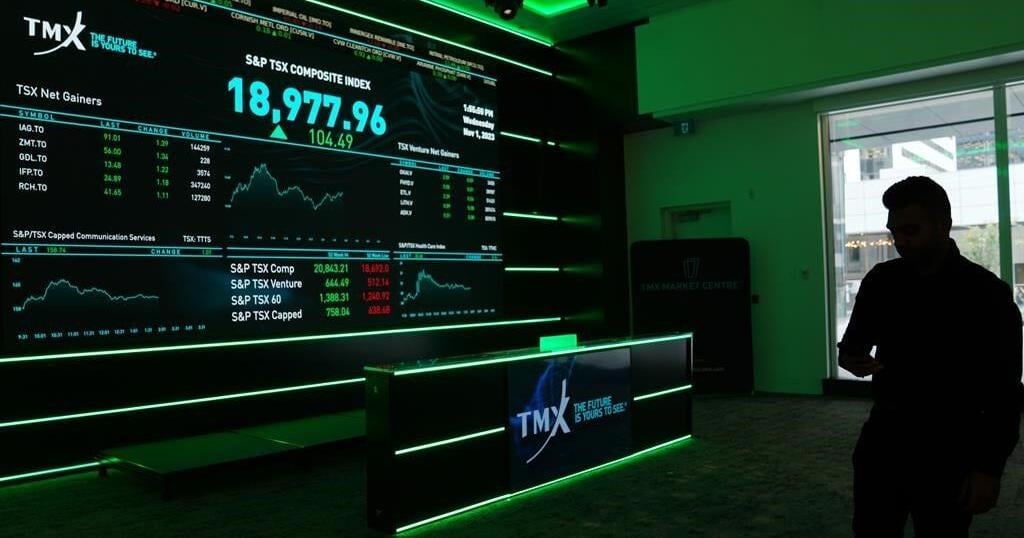Windsor has often felt forgotten at the southern end of Ontario, but now the region finds itself in the geographic and business centre of a rapidly emerging electric vehicle/battery industry.
Investment
Windsor-Essex being eyed for billions in new industrial investment

“The Volkswagen battery plant is wonderful news for St. Thomas and the greater London area, but it’s a benefit to all of us in Ontario and natural progression from us landing the LG plant,” said Joe Goncalves, Invest WindsorEssex’s vice-president of investment attraction and strategic initiatives.
Goncalves said the emergence of the Great Lakes basin as a battery manufacturing hub has led to Invest WindsorEssex’s strategy of selling the area as a logical site from which to service multiple battery plants.
Local officials have also already engaged with several suppliers for the factory that CATL, a Chinese battery manufacturer and technology company, will build for Ford Motor Company in Marshall, Mich. LG Energy Solutions also has two plants in Michigan and another in Ohio while its Windsor partner, Stellantis, is building a second battery plant with Samsung in Indiana.
InvestWindsor Essex currently has requests for information from battery plant suppliers for projects worth over $2.5 billion.
“Well over $1 billion of those are already at the pretty high level of site selection stuff with municipalities,” Goncalves said.
“We have a company from Japan coming for a visit May 15. Focusing on attracting Japanese companies is our next real push.”
The site, which is owned by Honeywell, offers 200-plus acres of serviced land zoned for heavy industry. It also has access to the Essex Terminal Rail lines and water access to the Detroit River.
“We’ve already had discussions with several companies about the Amherstburg site,” Goncalves said.
“The CIP makes the community extremely competitive. The site fits the perspective for several companies.”
“Without a CIP in place, council didn’t have any recourse to address that.”
The plan offers a rebate of the difference in taxes between what the tax rate on the land is now versus its value after development. The rebate is for periods up to 10 years.
Industrial investment is eligible for a rebate up to 100 per cent while it’s 50 per cent for commercial development.
There must also be a minimum of 60 full-time jobs and an investment of $1 million or more for the industrial rebate. For commercial investments to qualify for the 50 per cent rebate, the investment must create 20 full-time jobs and be valued at $500,000 or more.
Osborne said landing one or two feeder plants of 200 jobs apiece is a game-changer for communities the size of Amherstburg.
“It’s not just Amherstburg, it’s opportunities for all the municipalities in Essex County,” Osborne said. “It would also draw other businesses and people to the community.”
Twitter.com/winstarwaddell

Economy
S&P/TSX composite tops 24,000 points for first time, U.S. markets also rise Thursday

TORONTO – Canada’s main stock index closed above 24,000 for the first time Thursday as strength in base metals and other sectors outweighed losses in energy, while U.S. markets also rose and the S&P 500 notched another record as well.
“Another day, another record,” said Angelo Kourkafas, senior investment strategist at Edward Jones.
“The path of least resistance continues to be higher.”
The S&P/TSX composite index closed up 127.95 points at 24,033.83.
In New York, the Dow Jones industrial average was up 260.36 points at 42,175.11. The S&P 500 index was up 23.11 points at 5,745.37, while the Nasdaq composite was up 108.09 points at 18,190.29.
Markets continue to be optimistic about an economic soft landing, said Kourkafas, after the U.S. Federal Reserve last week announced an outsized cut to its key interest rate following months of speculation about when it would start easing policy.
Economic data Thursday added to the story that the U.S. economy remains resilient despite higher rates, said Kourkafas.
The U.S. economy grew at a three-per-cent annual rate in the second quarter, one report said, picking up from the first quarter of the year. Another report showed fewer U.S. workers applied for unemployment benefits last week.
The data shows “the economy remains on strong footing while the Fed is pivoting now in a decisive way towards an easier policy,” said Kourkafas.
The Fed’s decisive move gave investors more reason to believe that a soft landing is still the “base case scenario,” he said, “and likely reduces the downside risks for a recession by having the Fed moving too late or falling behind the curve.”
North of the border, the TSX usually gets a boost from Wall St. strength, said Kourkafas, but on Thursday the index also reflected some optimism of its own as the Bank of Canada has already cut rates three times to address weakening in the economy.
“The Bank of Canada likely now will be emboldened by the Fed,” he said.
“They didn’t want to move too far ahead of the Fed, and now that the Fed moved in a bigger-than-expected way, that provides more room for the Bank of Canada to cut as aggressively as needed to support the economy, given that inflation is within the target range.”
The TSX has also been benefiting from strength in materials after China’s central bank announced several measures meant to support the company’s economy, said Kourkafas.
However, energy stocks dragged on the Canadian index as oil prices fell Thursday following a report that Saudi Arabia was preparing to abandon its unofficial US$100-per-barrel price target for crude as it prepares to increase its output.
The Canadian dollar traded for 74.22 cents US compared with 74.28 cents US on Wednesday.
The November crude oil contract was down US$2.02 at US$67.67 per barrel and the November natural gas contract was down seven cents at US$2.75 per mmBTU.
The December gold contract was up US$10.20 at US$2,694.90 an ounce and the December copper contract was up 15 cents at US$4.64 a pound.
— With files from The Associated Press
This report by The Canadian Press was first published Sept. 26, 2024.
Companies in this story: (TSX:GSPTSE, TSX:CADUSD)
The Canadian Press. All rights reserved.
Economy
S&P/TSX composite up more than 100 points, U.S. stocks also higher

TORONTO – Canada’s main stock index was up more than 100 points in late-morning trading, helped by strength in the base metal sector, while U.S. stock markets were also higher.
The S&P/TSX composite index was 143.00 points at 24,048.88.
In New York, the Dow Jones industrial average was up 174.22 points at 42,088.97. The S&P 500 index was up 10.23 points at 5,732.49, while the Nasdaq composite was up 30.02 points at 18,112.23.
The Canadian dollar traded for 74.23 cents US compared with 74.28 cents US on Wednesday.
The November crude oil contract was down US$1.68 at US$68.01 per barrel and the November natural gas contract was down six cents at US$2.75 per mmBTU.
The December gold contract was up US$4.40 at US$2,689.10 an ounce and the December copper contract was up 13 cents at US$4.62 a pound.
This report by The Canadian Press was first published Sept. 26, 2024.
Companies in this story: (TSX:GSPTSE, TSX:CADUSD)
The Canadian Press. All rights reserved.
Investment
Tempted to switch to an online-only bank? Know the perks and drawbacks

Switching to an online-only bank more than a decade ago was just another way Jessica Morgan was trying to save money at the time as a new grad.
“Saving money was the main motivator,” Morgan, now a financial educator and founder of Canadianbudget.ca, recalled.
“After graduating, you no longer qualify for student rates where you might get free banking and I didn’t want to go back to paying fees for giving the bank my money to hold.”
Digital lenders have grown in popularity in recent years, with more players popping up in the sector and traditional banks beefing up their online offerings. But some Canadians may still be hesitant to bank with a financial firm that doesn’t have physical branches where you can talk to an employee face-to-face.
Natasha Macmillan, director of everyday banking at Ratehub.ca, says some of that hesitancy to switch to an online lender is loyalty.
“There’s a large portion of Canadians who have had the same bank account for many years … they’re just hesitant to switch because it’s what they know.”
Tedious paperwork to switch banks can also discourage many Canadians from making the move despite the ease of opening online-only bank accounts, Macmillan added.
“There’s that aspect of you still need to sit down, do your research and then pick that online-only bank,” she said.
Data security concerns have also sowed seeds of doubt among many who are contemplating the switch, and prefer to continue to work with traditional banks with long-established reputations, Macmillan said.
Morgan said she often hears concerns from her clients — “What if I need help? Is this bank safe to use?” or more logistical questions, such as having access to an ATM or getting certified cheques.
One of the only major snags she personally recalls running into with her online lender was when she was purchasing a home.
“I needed to get a certified cheque, like, right away if I was going to put in an offer,” Morgan said. “You can get a certified cheque but it takes three days or so. They courier it to you.” She ended up going to her husband’s traditional bank to get day-of service.
Most online-only banks tend to offer banking products, such as savings accounts, with higher interest rates compared with traditional banks. Many also offer access to cash through any bank ATM without charge.
“Digital banks have generally a lower cost structure than a traditional bank and those savings will be passed on to the customer,” said Mahima Poddar, group head of personal banking at EQ Bank. For example, EQ offers a high-interest chequing account with no fees on everyday banking and unlimited transactions.
But customers should be aware they can’t deposit cash into their account and they can only withdraw bills, not coins.
“We don’t offer depositing of cash, but all of our research has shown that the use of cash is really diminishing,” Poddar said. “There are very few reasons why you need to urgently deposit.”
Customers also have to get used to doing all their banking by phone or through the company’s website or app.
Poddar added she thinks Canadians are more open to change, especially after the COVID-19 pandemic, which accelerated the need for better online banking services.
While trust in traditional institutions plays a strong role in choosing a bank, Poddar said EQ has the same level of protection and is governed by the same regulators as the big six banks in the country.
Lisa Brandt, 61, switched to online-only Manulife Bank more than five years ago. She says she has benefited from the move and has saved a lot of money over time on various banking fees.
“It puts me in the driver’s seat,” she said.
However, she did run into an issue once with depositing a cheque after she sold her home.
“If you’re going to deposit a couple hundred thousand dollars from a house sale, you’ll have to courier (the cheque) to them,” she said.
“It’s not quite as simple as walking into a branch and saying, ‘Give me my money.'”
While many online-only banks have been growing their consumer banking product offerings, traditional banks tend to have more financial product options, not only for individuals but also for small businesses.
“What we have heard from some Canadians is while they might be moving their chequing, savings and GIC accounts to those (online-only) spaces, they’re still maintaining a mortgage with the big players,” Macmillan said.
It’s not about moving all assets to one bank but weighing options on an individual basis, such as picking a bank with the lowest fee on a chequing account but moving investments to another bank for a better return, she explained.
“We’re starting to see that flexibility where people are shopping around for the best opportunity that can give them the most bang for their buck,” Macmillan said.
She added it is important for people to identify why they’re thinking of switching and find an online-only bank that aligns with their goals.
“It’s finding that happy medium where you do feel trust and security, that lower cost and fees and also the convenience and accessibility,” Macmillan said.
This report by The Canadian Press was first published Sept. 26, 2024.
-

 News14 hours ago
News14 hours agoDak Prescott throws 2 TD passes and Cowboys win 7th straight over Giants, 20-15
-

 Sports24 hours ago
Sports24 hours agoYankees wrap up AL East with 10-1 win over Orioles, with Judge hitting 58th homer
-

 News14 hours ago
News14 hours agoCanada’s Leylah Fernandez knocked out of China Open
-
News11 hours ago
Montreal Hosts an International Decolonial Conference from September 27 to 29, 2024
-

 News12 hours ago
News12 hours agoNebraska to become last Big Ten school to sell alcohol at football games in 2025 if regents give OK
-

 News12 hours ago
News12 hours agoN.S. government again ups deficit in fall forecast, but fears this time may come true
-

 News14 hours ago
News14 hours agoDefence to resume cross-examining complainant in Jacob Hoggard’s sexual assault trial
-

 News14 hours ago
News14 hours agoAnishinaabe elder uses online video to pass along love of language to children



















